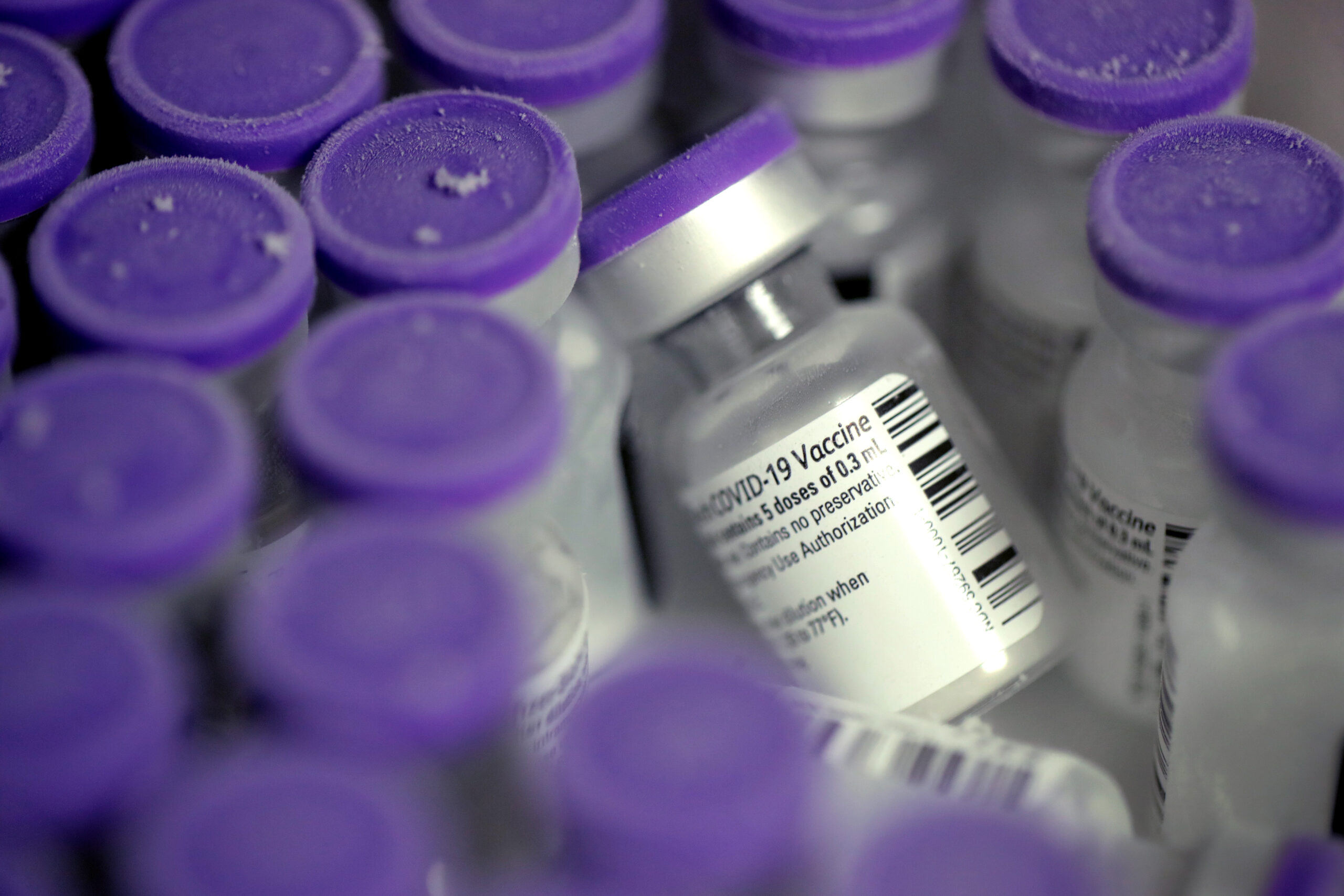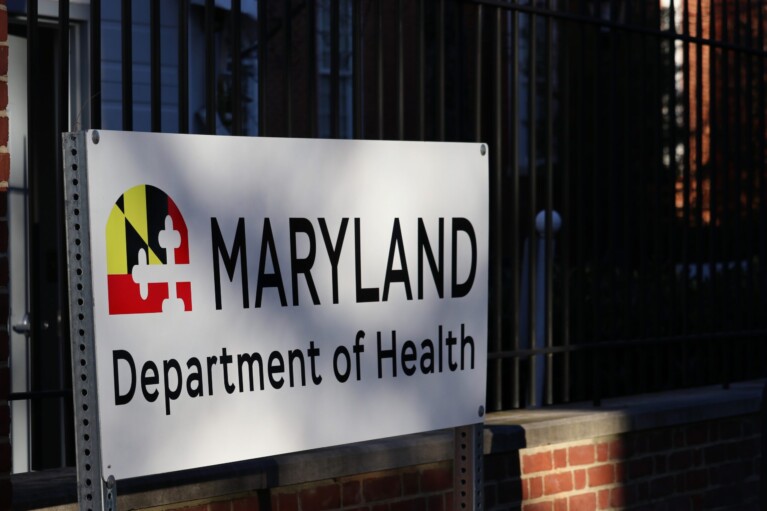Heading into the 2023 cold and flu season, what’s the state of COVID-19 in Maryland?

As we approach yet another winter since the first COVID-19 case was diagnosed in the United States in January 2020, the landscape of what has been a deadly virus looks vastly different.
Federal health officials approved another iteration of the COVID vaccine this week to protect against the newest strains of the virus. The Maryland Department of Health, in May, moved away from daily COVID updates to weekly updates. Social distancing and masking now are largely voluntary measures.
Yet the number of COVID hospitalizations are increasing in Maryland and nationally, though not nearly to the extent seen in previous pandemic years. With all these factors at play, how concerned should Marylanders be about COVID-19 heading into fall and winter when respiratory viruses usually spread quickly?
Maryland Department of Health officials said they are staying cautious and tracking rising numbers, but currently there are not plans to recommend additional social distancing and mask measures.
Instead they urge Marylanders to get an updated vaccine and focus on “general health hygiene,” which includes washing hands and covering your mouth when coughing or sneezing. The department also recommends staying home from work and school when you’re sick and “wearing a mask when appropriate.”
“COVID is still present, but we have a much better ability to protect our population from it,” according to Sen. Clarence Lam (D-Anne Arundel and Howard), who is a public health physician.
“There are still people getting sick, but one can protect themselves from ending up in the hospital by getting vaccinated and boosted with the latest booster…so that they can ensure that they have the highest level of protection available for themselves — especially going into the fall and winter seasons where we know respiratory illnesses typically go up,” he said.
The federal Centers for Disease Control and Prevention recently recommended that most Americans over the age of six months old should get a newly approved COVID-19 booster in order to combat the recent, more-transmissible variant of the virus, States Newsroom reported Tuesday.
Maryland Matters has been tracking the state health department’s regular COVID updates, and the number of COVID cases and hospitalizations has been on a steady upward swing for a few weeks, matching a similar trend across the United States.
From early January to mid-June, COVID cases were decreasing in Maryland, from over 1,000 cases a day in the first week of 2023 to as few as 25 reported cases on June 19. But then cases started rising, and the most recent data show there were over 2,300 cases of COVID-19 last week.
Hospitalizations for COVID are also on an upward swing, according to the Department of Health’s website, with an average of 230 patients hospitalized each day.
“It is not unusual to see upticks as individuals travel and take vacations,” the Maryland Department of Health said in a written statement. Nationally hospitalizations for COVID “have increased for seven straight weeks, and rose more than 15% to 17,418 for the week ending Aug. 26, according to the latest data from the CDC.”
“But that number remains below the surge the nation saw in summer 2022, when hospitalizations climbed to more than 40,000,” the department noted.
Deaths as a result of COVID have been fairly steady in Maryland in recent weeks, according to the department’s updates. The number of daily COVID deaths usually ranged from zero to four over the past several weeks. Occasionally, six to seven COVID-related deaths were reported in one day.
That said, the state has not reported a daily COVID-death count of 10 or more since early February.
“At least in the current direction we’re going, it doesn’t look like we’re going to get that extreme, fortunately. But we have to be vigilant,” Lam said. “We’re hoping it will be a fairly quiet season, but this is where everyone in public health is still watching closely and holding our breath.”
But because cases of respiratory illnesses such as COVID tend to increase in colder months, federal, as well as state, health officials are recommending that most people get the updated COVID vaccine.
CDC numbers show an overall reduced appetite for continuing to get regular COVID shots. About 81.4% percent of the U.S. population got the first COVID vaccine, but the vaccination rate dropped to 69.5% for the completed primary COVID shot series.
Just 17% of the U.S. population received the updated booster that was released last year. It’s not clear how many people in the U.S. or Maryland are interested in getting the newly approved updated vaccine.
“That is a concern,” Lam said. “And I think that’s where it’s incumbent on leaders and health care providers and folks in the community to really emphasize the importance of individuals getting vaccinated with the latest booster,” he said.
The Maryland Department of Health says that it soon will expand public communications regarding COVID-19, flu and the Respiratory Syncytial Virus (RSV), which will include radio spots, digital ads and social media.
But the state health department anticipates yearly spikes from the once-novel coronavirus, the impacts of which can be mitigated by updated booster shots. The department said that updated COVID vaccines will be available in pharmacies and doctors’ offices next week.
Lam recommended that people consider getting both the COVID-19 booster and their annual flu shot.
“It’s okay if you missed the last booster. It’s okay if you missed the one before that, but we have the latest booster now that is better able to target the most recent strains,” Lam said. “And the best thing you can do, especially as we see cases tick upwards a little bit, … is to get vaccinated.”
During the COVID public health emergency, the federal and state governments spent billions in order to make COVID vaccines available to the public for free.
But as the public health emergency expired, the ability for uninsured individuals to get free COVID vaccinations has become more complicated, while those who are enrolled in federal health care plans, including Medicaid and Medicare, can receive COVID vaccines for free or at a low cost.
Thursday, the U.S. Department of Health and Human Services announced a temporary “Bridge to Access Program” program for uninsured adults to continue receiving free COVID-19 vaccines.
According to a Thursday press release, the program will provide “continued free coverage for the estimated 25-30 million adults who would have otherwise lost access to affordable COVID-19 vaccines now that the distribution of vaccines has transitioned to the commercial market.”
That program is set to expire in December 2024, but other programs could help more uninsured Americans receive free vaccinations, the HHS says. Most Americans can still receive free vaccines under their insurance plans, according to HHS.




 Creative Commons Attribution
Creative Commons Attribution